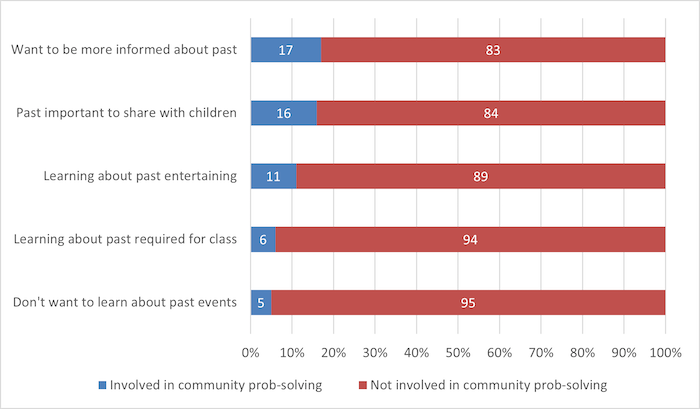Does One's Historical Outlook Influence Civic Engagement?
Summary: The public has various reasons for taking interest in history. In correlating those interests with a selection of civic activities, we found minor effects. Stronger factors in whether respondents were engaged in their communities are age, education level, race/ethnicity, and even political affiliation. Nevertheless, we also learned that those who expressed no interest in learning about the past were consistently among the least civically active.
Those of us working in history fields want the public to be more informed about the past, and to use that knowledge responsibly for the betterment of society. In that vein, we hope that such knowledge translates to greater civic engagement, history-related or otherwise. Does such a link exist? Drawing such causal connections is inherently difficult, but our data lead us to believe that advanced education and some forms of interest in the past are conducive to increasing people’s civic involvement.
Consider survey respondents’ reported participation in community problem-solving since January 2019. Topline figures showed a 14 percent involvement rate, but that number was higher (admittedly, not by much) for those expressing interest in simply being informed about the past or wanting to share such information with their children. At the same time, those with only a passive interest in history (i.e., who find it entertaining) or an educational requirement to develop one, trailed the pack, while people with an overt lack of interest in history were only about one-third as likely to be active participants in community affairs (Figure 137). But the effects of other variables loom larger. Higher education seems to be a key factor, with degree holders twice as prone as non–college graduates to engage in local problem-solving (Figure 138). Disparities also appear as a function of race/ethnicity, where Blacks, regardless of education level, reported about the same level of activity as college graduates, but Hispanics were less than half as involved (Figure 139). Otherwise, differences as a matter of age group, gender, and political party affiliation were small.
